Great Encounters
Book excerpts that chronicle famous encounters among twentieth-century cultural icons
When drummer Joe Morello joined the Dave Brubeck Quartet
Photo Paul Desmond Collection
Excerpted from
Take Five: The Public and Private Lives of Paul Desmond
by
Doug Ramsey
__________________
By the fall of 1956, Joe Dodge was worn down by the travel and the intense schedule and wanted to be with his family. He told Brubeck it was time to look for another drummer. In the Quartet’s New York stays, Desmond had heard Marian McPartland’s trio and was impressed with Joe Morello, the drummer who had been working with her since 1953. Morello, born in Springfield, Massachusetts in 1928, played there with alto saxophonist Phil Woods and guitarist Sal Salvador before he moved to New York in 1952. After short stints with guitarist Johnny Smith and with Stan Kenton’s band, he settled in at the Hickory House for a long run with McPartland and quickly became a musicians’ favorite in New York for his time, touch and a technique that equalled Buddy Rich’s. Tall, quiet and diffident, with thick glasses to aid his drastically poor vision, Morello looked to McPartland “less like a drummer than a student of nuclear physics.” Morello could swing firmly at low volume. With McPartland he used wire brushes, rarely his sticks. NBC-TV’s Dave Garroway, a canny jazz listener, said that Morello’s touch on his cymbals was like a butterfly’s wing. That was the kind of drumming Paul heard at the Hickory House. It fit his ideal of what drumming should be. He enthusiastically recommended Morello to Brubeck.
“Paul told me we should hire Joe Morello. He said Morello was a fantastic drummer who always played softly, with brushes,” Brubeck said. “I went over to hear him with Marian and was knocked out.”
Morello remembered Brubeck and Desmond coming into the Hickory House several times to listen to the McPartland Trio. “I had been planning on leaving Marian’s group anyway,” Morello recalled. “There was an audition and an offer from Tommy Dorsey, but his manager got cute with money and while that was on hold, Dave called and asked if I would be interested in joining his group.”
Morello did not jump at the opportunity.
“I met him at the Park Sheraton in New York, where he was staying. I told him the times I’d heard his band at Birdland, the spotlight was on him and Paul, and the bass player and drummer were out to lunch in the background somewhere. I told him I wanted to play, wanted to improve myself. He said, “Well, I’ll feature you.”
The Brubeck group left on a tour. When the Quartet returned, Morello said, he told Dave, “Let’s try it. Maybe you won’t like my playing and I won’t like the group. There’s no use signing anything until we’re really sure.” In lieu of a contract, they exchanged telegrams confirming their intentions.
“Two days later,” Morello said, “I got a call from Tommy Dorsey’s manager. He said, ‘You got the job. Tommy’s gonna give you the money.’ I told him it was too late, I’d just signed with Brubeck. ‘Oh, you don’t want to play in Birdland all your life,’ he said. ‘Look what we did for Buddy Rich and Louis Bellson.’ I told him, ‘You didn’t do anything for Buddy Rich and Louis Bellson. Look what they did for your band.'”
Brubeck sent Morello some of the Quartet’s records so that he could hear the pieces they would play on his first appearance with the band, a television show in Chicago. Morello flew there from New York.
“I went right to the TV studio,” Morello said. “Dave was flying in from somewhere. They showed up about fifteen minutes before air time. We ran down some tunes. He’d sent me a couple of simple little tunes, time-change things, nothing serious. You listen to it once and you can do it. I think they were “I’m In a Dancing Mood,” and “The Trolley Song.” There was a little transition in the way of time; it was no big deal. Dave introduced me on TV as his new drummer. When it was over, Dave said to the guys, ‘Joe played these things like he wrote ’em.’ It was very nice. But, really, they were very simple. So, it went fine and then we went into the Blue Note for a week.”
That night at the club, Brubeck urged Morello to use sticks and assigned him a solo. Morello said that the solo got “a little standing ovation.” Desmond left the stand for the dressing room. “At the end of the drum solo, he just took off,” Morello said. When Brubeck got there at the end of the set, Desmond wheeled on him and presented an ultimatum: “Morello goes or I go.” Brubeck said, “Well, he’s not going.”
“Joe could do things I’d never heard anybody else do,” Brubeck said. “I wanted to feature him. Paul objected. He wanted a guy who played time and was unobtrusive. I discovered that Joe’s time concept was like mine, and I wanted to move in that direction. Paul said I had to get another drummer, I told him I wouldn’t. I didn’t know whether Paul and Norman would show up the next night. They came to a record session at Columbia in Chicago during the day, but they wouldn’t play. So Joe and I played for three hours. And they told me they were going to leave the group. And I said, ‘well, there’ll be a void on the stand tonight because Joe’s not leaving.”
“So, I went to the job and, boy, was I relieved to see Paul and Norman. But I wasn’t going to be bluffed out of Joe. It was not discussed again. That was the end of it. Paul knew that Morello was one of the greatest drummers who ever lived, but what he wanted was a steady beat. Some nights Joe would do more than that and Paul would say, ‘Please don’t do adventures behind me.’ Later, of course, Joe and Paul became very close.”
In the months following the failed bluff, what Brubeck has called an “armistice” was set up, but the situation more closely resembled the edgy cease-fires of Sarajevo or Belfast. After New Yorker writer Robert Rice traveled extensively with the Quartet on tour, he described the hostilities in a profile for the magazine.
“…bloody war was likely to rage whenever the Quartet played, with Brubeck doing his best to mediate between Morello on the one hand and Bates and Desmond on the other. Morello would play some passage that Desmond considered to be in abominable taste, and Desmond would express his feelings by blowing a strident parody of it on the horn — and then become doubly incensed when the audience, as often happened, cheered the horn passage. Or else Morello, who is utterly unbending about the prerogative of a jazz group’s rhythm section to guard a tempo once it has been set, would hear Bates accelerating to keep up with his leader — who, like many jazz pianists, tends to play faster when he becomes excited — and would start kicking the bass drum furiously in what he considered the correct time, a procedure so noisy that it couldn’t help bringing back the strays, and that won Morello the hatred of Bates. On one occasion, in what he now sees as a fairly infantile gesture of defiance, Morello took a drum solo at such an exaggeratedly fast tempo that Bates had to play in half time, Desmond simply walked off the stage, and even Brubeck’s neck got red with fury; at the end of that concert, Desmond strode over to Morello, said, ‘All right. I’ll take a full-page ad in Down Beat saying that I can’t play fast. Will that satisfy you?,’ and strode away again. Things got so bad that for a time Morello insisted on setting up his drums on the opposite side of the piano from Bates, so that he wouldn’t hear the bass at all, while Desmond hardly ever played more than two or three choruses at a time, and only Brubeck, who had to try to play hard enough for four men, was on speaking terms with everyone else in the group.”
There were serious disagreements among musicians over whether Morello’s feet may have been just a trifle faster than even Buddy Rich’s. He was unfazed by polyrhythms and unusual time signatures. Morello was not about to let all those chops go to waste, and neither was Brubeck. But it was clear to Desmond from the outset that in his musical life, Lester Young’s ideal of a little tinky-boom was a rapidly-receding golden memory.
Norman Bates saw the conflict from inside the battle. “When you consider the combination of Dave and Paul, who’s now making this small sound on the alto saxophone, if I can call it that, you will see that there had to be something to hit the fan with. Someone had to be forceful, had to show real power. So between Dave and Paul, I think, the arrangement was that Dave would do all the barking that needed to be done. Now, they’ve got Joe Morello, and he rapidly adjusted himself away from the very well-integrated, consistent piano of Marian McPartland, but, with that as a model, he didn’t know what to do. Joe had to learn how to adapt himself by not participating in Dave’s excursions. So, we found Joe, during Dave’s solos, studying the ceiling while knitting softly with a pair of brushes until it was his time to shine, which was a solo. Well, when he’d catch Paul playing a repeating phrase of some kind that had some rhythm content to it, some simple pattern, Joe, as soon as he recognized the pattern, would join right in and play something that was in his mind appropriate and called for. Paul didn’t like that at all,” Bates said. “He didn’t want to be shoved, or muscled, or bound, or confined.”
Brubeck was able to make the center hold through all the internecine battles over tempos, volume, and drum fills during Desmond’s solos. Despite their powerful disagreements about how Morello’s skills should be deployed, Brubeck was able to take advantage of the respect Morello and Desmond had for one another’s abilities. The respect was ultimately to grow into genuine affection, but that was at the end of a rough road.
Bates said, “Paul’s comment when Morello was still trying to join in and being advised what he should and should not do, was, ‘This is the death of the Quartet,’ simply. If he had played like Pete Brown, then the two of them would have had a lot to say to each other. But by this time, he was not playing like that. He was playing in the way that people expected him to play and that was good enough for him, and that had to be good enough for anybody else.”
“For a while it was uncomfortable with Paul,” Morello told me. “But as time went on, it worked out. We became very close and used to hang out together. The last four or five years we hung out quite a lot, actually.” Morello’s phrasing and inflection were uncannily like Desmond’s when he said that.
“I think the world of Paul,” Morello said. “No, it was more than that. I loved the guy.”
Morellos advent laid the groundwork for the adventuring that allowed the Brubeck groups success with unorthodox time experimentation. In the meantime, Columbia had them recording on a demanding schedule, a new album every quarter. They made a succession of theme-related LPs like Southern Scene, Gone With The Wind and Dave Digs Disney and a continuation of the college concert motif. Ted Gioia wrote, By the time of Jazz Goes To Junior College in 1957, the bands umpteenth live campus date, it seemed as if the move to junior colleges came about because Brubeck had gone through all the four-year institutions around.
After his old friend Morello joined the Brubeck group, Phil Woods began paying more attention to the band and to Desmond. He and his pal Gene Quill may still have been wearing their altos like six guns on their hips, but they could no longer dismiss Desmond as just another effete saxophonist from west of the Hudson. Like other open-minded Charlie Parker disciples, they recognized Desmonds musicianship and his individuality.
With wisdom — well, maybe not wisdom, but a with a modicum of maturity — I got to appreciate Paul, Woods said, because he was a great alto player. The older I get, the more I appreciate him. I heard a lot of Lester Young in his playing, the economy factor, always finding the one note that would work. He didnt try to sound like Bird. Neither did Lee Konitz. They didnt do any false posturing or any vaudevillian vulgarisms. They played who they were and they were both gentlemen. Woods paused. I think one of my most successful pieces is the one I wrote for Paul, from my album I Remember. Its called Paul. I tried to capture his musical thing, and its one of my more satisfying compositions. Im sorry he never heard it.
Gerry Mulligan, the baritone saxophonist whose quartets rise in favor and fame paralleled the increasing success of the Brubeck group, was an inveterate sitter-in. When he made an impromptu guest appearance with Brubeck at a Carnegie Hall concert in 1954, he and Desmond enjoyed the rapport and discussed the possibility of recording together. Label conflicts prevented it then. Desmond was signed with Fantasy, Mulligan had other label obligations. Finally, a swap became possible when Norman Granz agreed to allow Stan Getz, one of his Verve artists, to record with Fantasys Cal Tjader in exchange for Desmonds recording with Mulligan. In August, 1957, the saxophonists went into the studio with Mulligans bassist, Joe Benjamin, and drummer, Dave Bailey, for two sessions that produced a twelve-inch LP. The pianoless format appealed to both men, and the record is relaxed, wry and witty, with tight, often interactive playing. They did a blues and an assortment of standards, some retitled in line with Desmonds and Mulligans love for word play. All The Things You Are became Battle Hymn of the Republican. These Foolish Things emerged as Wintersong, My Heart Stood Still as Standstill, Lets Fall in Love as Fall Out. They also played Mulligans Line for Lyons, which became a staple of Desmonds repertoire in later years.
In early 1958, with a world tour for the State Department in the offing, Norman Bates elected to get off the road and return to San Francisco. Morello recommended Eugene Wright as Batess replacement in the Brubeck Quartet. He had heard Wright night after night in Cal Tjaders quintet, when the two bands played opposite each other at the Blackhawk, and was impressed. Wright had led his own band, the Dukes of Swing, when he was in his early twenties in his native Chicago, then worked with Gene Ammons, Count Basie, Arnett Cobb, Buddy DeFranco and Red Norvo. When he joined Brubeck, he had been the bassist for three years in the remarkable edition of the Tjader Quartet that also included pianist Vince Guaraldi. Tall, a powerful bassist with a commanding presence, he satisfied Desmonds basic requirements of steadiness and swing. Wrights roots were always firmly attached to the basics, but his mind was open to new musical ideas. He was interested in Brubecks time explorations. Still, when Brubeck asked him to join the band, Wright had his doubts.
I went over to his house so we could try each other out, Wright said. Brother Can You Spare a Dime, thats the first one he pulled out for us to play. We did the introduction and the first chorus, then we started smokin, and we started laughin, cause we got to groovin, just the two of us, and Dave said, Eugene Wright, you happy? and I said, Dave, if youre happy, Im happy. Ill take the job. But I told him, I dont know if I can make it with your friends.
When he got together with all three, Wright discovered a high level of musicianship, and he found a bond with Morello resembling the instant rapport that Brubeck and Desmond had discovered a decade earlier.
Right away, Joe and I were as one. It was like Jo Jones and Walter Page with Count Basie. It was right from the beginning. Joe Morello and I locked up immediately. Joes out of New York and he had that thing — Ben Webster and all those guys loved him because he had that little extra thing you need. When musicians used to ask me how I could play with that band, I told them they werent listening. I told them I was the bottom, the foundation; Joe was the master of time; Dave handled the polytonality and polyrhythms; we all freed Paul to be lyrical. Everybody was listening to everybody. It was beautiful. Those people who couldnt accept it were looking, not listening.
Officials at East Carolina College in Greenville, South Carolina, were looking. Wright was to make his first appearance with the Quartet there on February 5, 1958. With a gymnasium full of students waiting to hear the band, the dean of the university told Brubeck they would have to play without Wright. Iola Brubeck recalled, This was the one where the university president said he didnt want another Little Rock. Four months earlier in Arkansas, Little Rock High School was integrated under the protection of Federal marshals and troops from the National Guard and the 101st Airborne Division of the US Army. The south was in turmoil over school integration.
I couldnt go on because I was black, Wright said. So Dave said, Well, listen, if my bass player cant go on stage, then we wont be going on, either. So it went from the dean to the mayor to the governor. That had never happened before. Brubeck, as fierce in his sense of justice as he was adamant in defense of his music, refused to back down to a system of segregation he abhorred.
Word of what was happening leaked out to the students crammed onto the floor of the gym and into bleachers along the sides. They began stamping their feet in favor of Wrights playing. Brubeck said that to the musicians waiting in the dressing rooms below, it sounded like a thundering herd of buffalo.
Finally, Wright said, the governor told the man, I guess youll have to let him play. Those students were so mad. Theyd been waiting for an hour and a half. When we did hit the stand, man, we were smokin, burnin. After that nonsense, for some reason we were really up. We hit and, man, we played a straight hour and fifteen minutes. That was the very first time I played with Paul, and I really heard him play. Dave laid out for some reason or other. Joe and I started marchin on him, boy, right in the pocket. What a lot of drummers and a lot of bass players dont know, is that you never start forte. You drop down, and thats what got Paul. He had plenty of room and air to build. He built about fifteen choruses. I cant remember what the tune was, a standard.
We started him here. Wright put his hand at chest level and slowly raised it. And about two, three choruses, he started stretching out, and we moved it up another notch. We got him to such a peak that when he finished that solo, where Dave would normally come in and play a solo behind it, he had to play the last eight bars and take it right out. The house came down. We had to wait about five minutes, six minutes before they they cooled down. Cause they were aware of what was happening. People are funny. They can sense things, the audience, especially the ones who love music. And, boy, he just stopped the house.
The musicians who came to be called the classic Dave Brubeck Quartet had gone through their baptism of racist fire. Now, they were off to see the world.
Take Five: The Public and Private Lives of Paul Desmond
by
Doug Ramsey
__________
Excerpted from Parkside Publications, Inc. Excerpted by permission of the author and Parkside Publications. All rights reserved. No part of this excerpt may be reproduced or reprinted without permission in writing from the publisher.






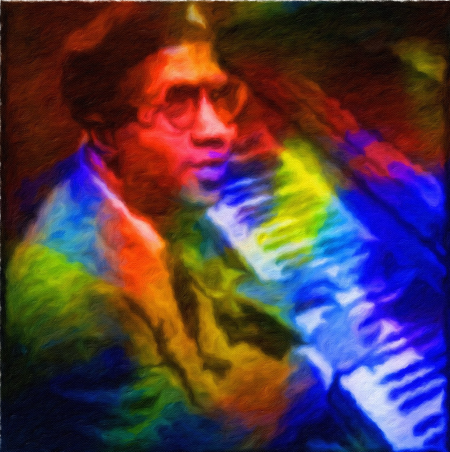


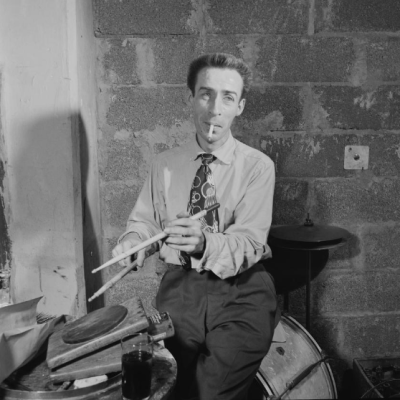


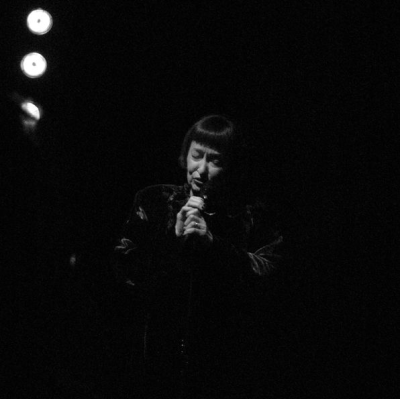

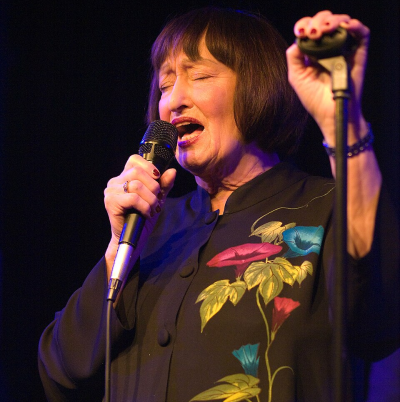


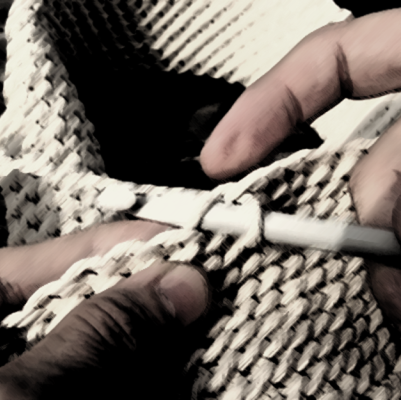

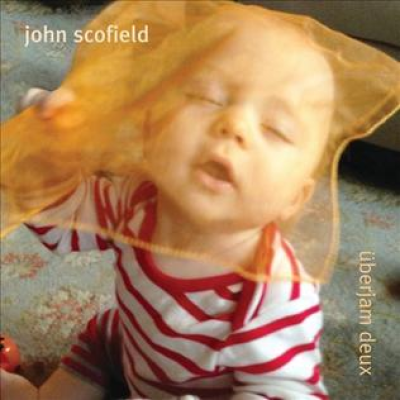
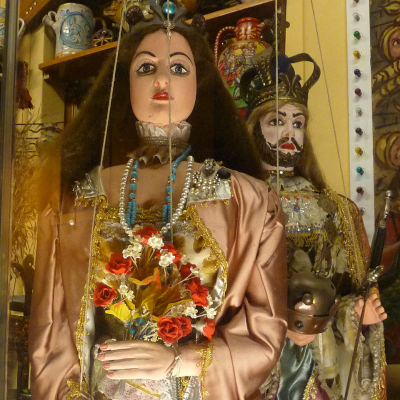

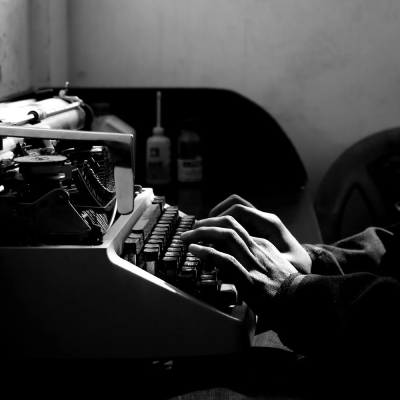


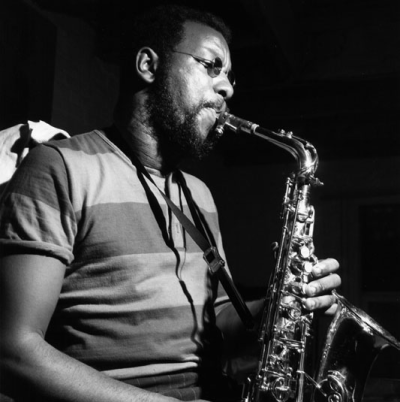

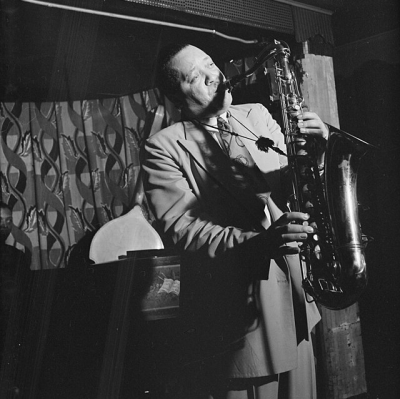
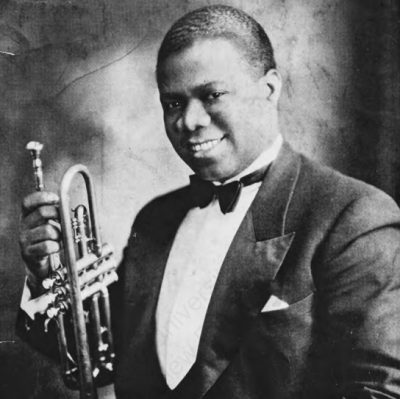

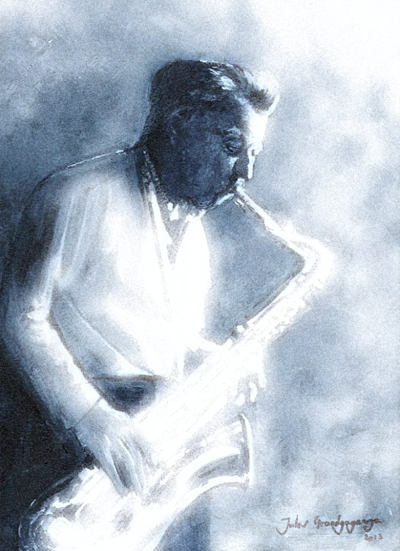

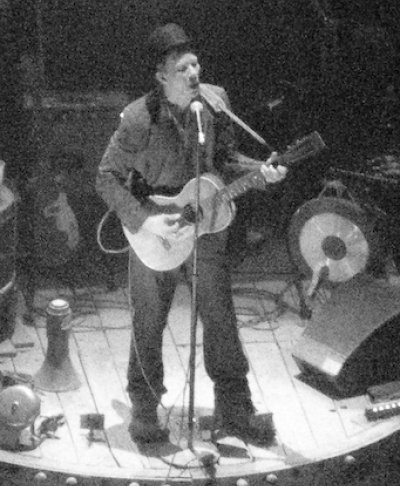









[…] in that it is performed at a faster tempo than the version that was released as a single. I read an interesting blog post a while ago that explains how Joe Morello’s arrival almost broke up the Dave Brubeck Quartet, […]
Amen.